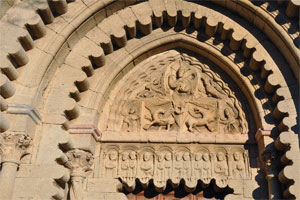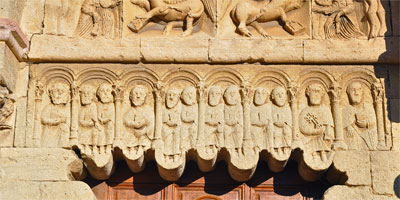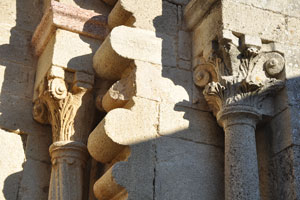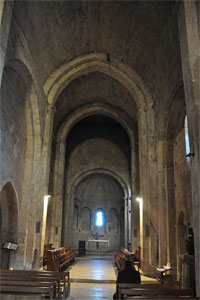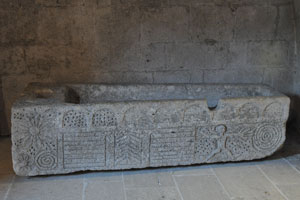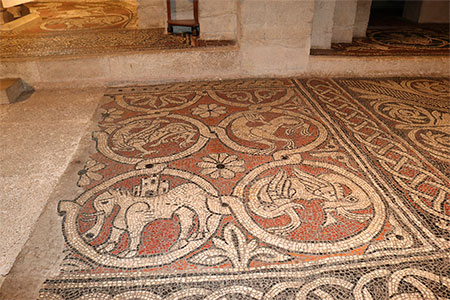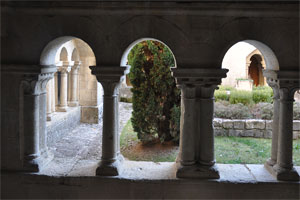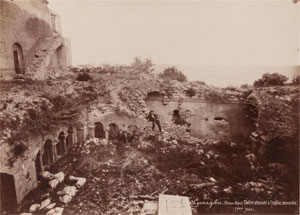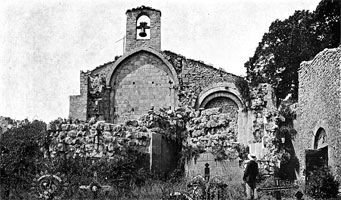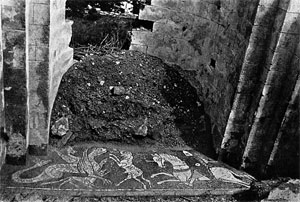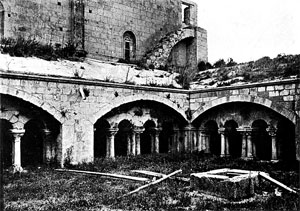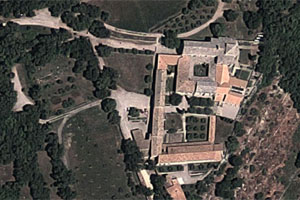Priory of Notre-Dame of Ganagobie
Abbaye Notre-Dame de Ganagobie / Ganagobia / Canacopie
(Ganagobie, Alpes-de-Haute-Provence)
This monastery is believed to have been established in the mid-10th century thanks to Jean III, Bishop of Sisteron, who is said to have founded two churches at this site: one dedicated to the Virgin Mary and the other to Saint John the Baptist. Around 960-965, he is thought to have donated the site to the Abbey of Cluny, which at that time was governed by Saint Maiolus, who was originally from this region. Subsequently, this Cluniac priory benefited from various donations, and a privilege from Pope Gregory V (966-999) confirmed its affiliation with Cluny.
During the 12th and 13th centuries, more donations (especially from the Counts of Forcalquier) and confirmations of property were recorded. It was during this period that a new monastery was built. By the mid-14th century, it had become the center of Cluny’s possessions in this region, with many small priories coming under its authority. In the 15th century, the monastery went through a period of decline, likely exacerbated by its isolated location and lack of maintenance. During the 16th century, improvement works were carried out, but in the second half of that century, it fell victim to the Wars of Religion and was sacked; by 1579, the community was no longer in existence.
Monastic life was eventually restored, and the priory managed to recover some of its assets until the Order of Cluny was suppressed in 1787, and in 1788 Ganagobie was secularized. The site was subsequently sold following the Revolution. The priory suffered from abandonment and looting due to its isolation and fell into ruin. During the 20th century, the site was revived for monastic life; it was entrusted to the Benedictines of Marseille in 1891, abandoned again in 1901, and restored in 1922 by the Abbey of Hautecombe (Savoie), which had also been restored. It was once more restored and repopulated with the arrival of a community from Hautecombe, which moved to this new abbey in 1992.
The Romanesque church from the 12th century is still preserved, featuring a single nave construction with a transept consisting of two naves, where three apses open up. To the south is the cloister, surrounded by the old monastic buildings. To the west is the main entrance to the church, with a decorated portal, featuring a restored lintel and tympanum. The presbytery floor is adorned with an extensive and remarkable set of mosaics, discovered at the end of the 19th century and subsequently covered again to ensure their preservation; they were finally uncovered in 1975.
- ANGEL, Arnaud d’ (1911). Notice archéologique sur le prieuré de Ganagobie (Basses-Alpes), église et cloître du XIIe siècle. París: Imp. Nationale
- BARRUOL, Guy (1977). La Provence romane 2. Zodiaque. La nuit des temps
- BESSE, J.-M. (1909). Abbayes et prieurés de l'ancienne France. Vol. 2: Provinces ecclésiastiques d’Aix, d’Arles, Avignon et Embrun. Abbaye de Ligugé
- COMMUNAUTÉ DES BÉNÉDICTINS (2010). L’abbaye Notre-Dame de Ganagobie. Ouest-France
- COTTINEAU, Laurent-Henri (1936). Répertoire topo-bibliographique des abbayes et prieurés. Vol. 1. Mâcon: Protat
- FIXOT, Michel; i altres (1976). Fouille de sauvetage au prieuré de Ganagobie (Alpes de Haute-Provence). Archéologie médiévale, vol. 6
- LAPLANE, Edouard de (1843). Histoire de Sisteron tirée de ses archives. Vol. 1 i 2. Digne: A. Guichard
- MILON, A. (1879). Précis historique sur le monastère de Ganagobie dans l'arrondissement de Forcalquier (Basses-Alpes). Congrès archéologique de France. 45e session. Le Mans et Laval. París, Société française d'archéologie


